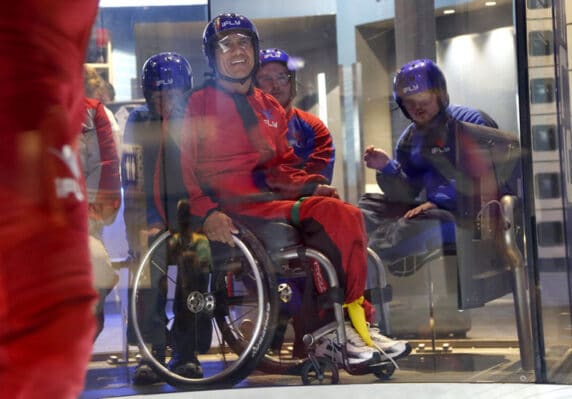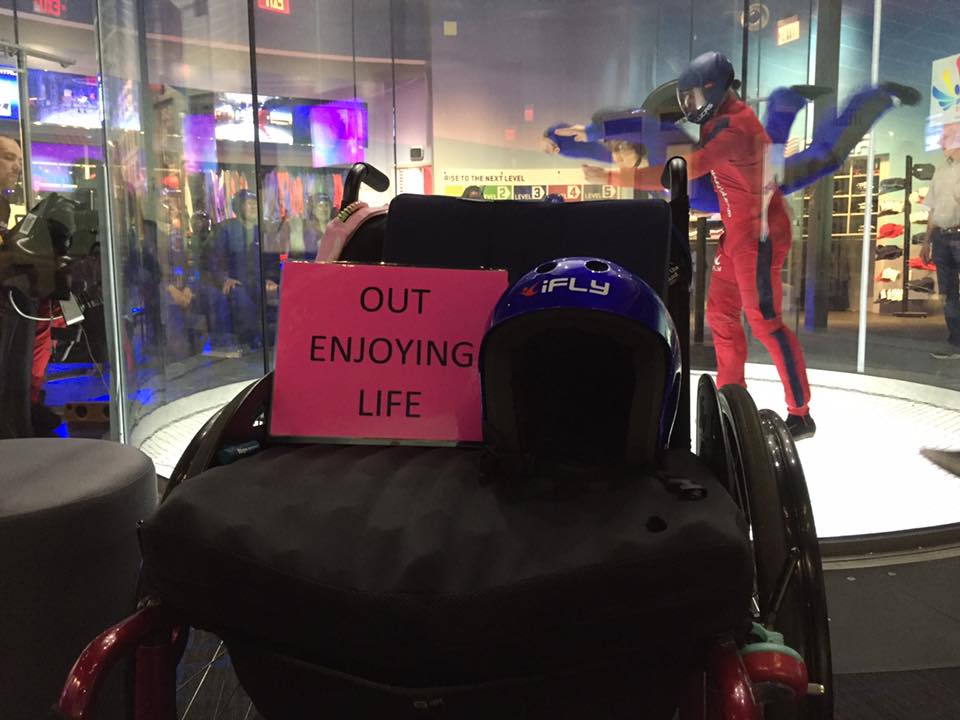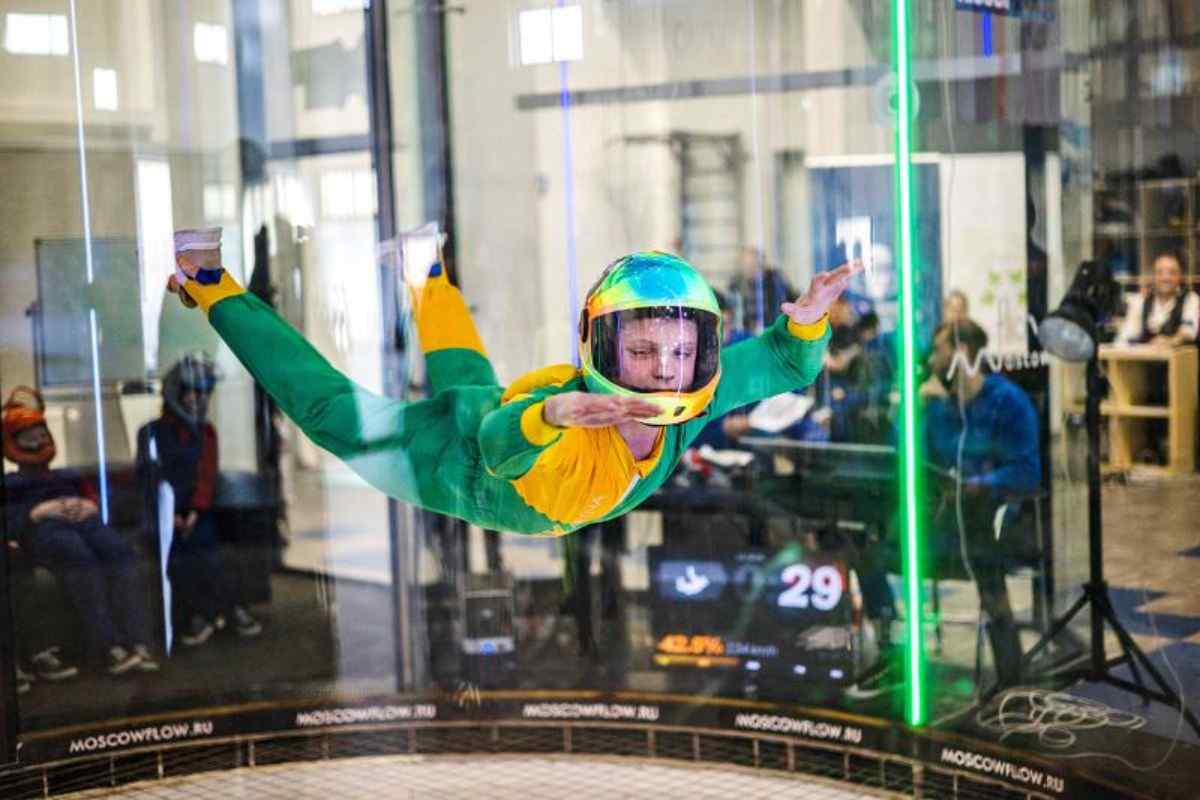Features
Opinion: Come One, Come All
Indoor skydiving is often dismissed as a sport for the privileged. In truth, it could be the most accessible sport in existence.

[the_ad_placement id=”article-above-content-mobile-only”]
Like many action sports, indoor skydiving often gets a bad rap as an activity only for the privileged.
In part, this is due to its financial cost. With most tunnels costing $40 or $50 for two minutes of flight time, it’s not nearly as expensive to try wind tunnel flying as it is to try traditional skydiving, bungee jumping, or most other action sports. I’m a lifelong rock climber and climbing journalist, and I can’t think of a guided climbing excursion you could find for that price. Prices are sometimes much lower than that (this tunnel in Mexico charges only $17 for two minutes of flying), and repeat visits or bulk flight time packages can lower the per-minute rate dramatically.
But the financial barriers to entry for indoor skydiving are legitimate, particularly when compared to traditional sports like baseball, soccer, or basketball. If you’re going to fly regularly, the cost adds up. It’s certainly more expensive to routinely fly in wind tunnels than it is to buy a basketball and head over to the local court.
What makes our sport stand out, however, is that we’re quickly learning that indoor skydiving just might be the only physical sport in existence with ZERO barriers to age, physical ability, or mental ability.

She Can’t Walk… But She Can Fly
On a website dedicated to covering news, treatments, and diagnoses for Rett syndrome (a rare incurable genetic disease resulting in loss of coordination, speech, and use of the hands), a mother recently wrote about how her seven-year-old daughter, a Rett’s patient, flew in a wind tunnel at iFLY.
“Cammy was having the same experience as the other children in her group,” her mother wrote, “without any adaptations.” Despite being unable to use her hands, unable to speak, or physically respond to the commands given in the tunnel, she was able to fly free in the tunnel.
A girl who couldn’t even walk in her normal life was now flying like a superhero.
How many other physical sports can a nonverbal, nonambulatory seven-year-old girl take part in?
I can’t name a single one.
This is only one of a slew of stories that have popped up lately demonstrating indoor skydiving’s accessibility. A European charity initiative, the Windtunnel Handifly Project, is offering 9,000 flights free-of-charge to disabled flyers across the continent. Emma Perez, a visually impaired woman who flew in a Barcelona tunnel as part of the project, spoke to indoor skydiving’s accessibility. “You don’t need anyone’s help to do it,” she said. “You can do it completely on your own. Right now, I need help because I don’t know how to control myself, but after seeing how [professional fliers] go in there and do acrobatics… It’s just fantastic. You don’t need anyone. Not even a guide or anything.”
Skydiving with Cerebral Palsy
A Russian initiative, “Fly with Me,” is using indoor skydiving to treat children with cerebral palsy, putting them in a wind tunnel to help develop muscles and joints that are difficult to use when they’re restricted by gravity.

Over 120 children have already joined the initiative, among them 13-year-old Maryan Dolik. Dolik can barely walk down a set of stairs on his own, but flies completely on his own in a wind tunnel, and has become stronger outside of the tunnel, too. His mother reported that after three weeks of daily flying in a wind tunnel, both his range of movement and coordination had dramatically improved. “I’ve started walking better, become stronger, and have better endurance,” he said.
Russian neurologist Valida Isanova explained that for cerebral palsy patients, “the [wind tunnel] flights help work joints and muscles that are not used in everyday life.”
Indoor Skydiving is Truly for Everyone
It’s not just accessible for the physically and mentally disabled, it’s one of the only action sports that an elderly person can take part in. A 72-year-old wheelchair-bound Vietnam veteran flew in a wind tunnel in Dallas with several of his friends, and we wrote earlier this year about an 80-year-old British woman who flew to raise money for an aviation charity. These are just two of countless similar stories happening in wind tunnels around the world every day.
Whether you’re blind or paralyzed, whether you’re missing arms or legs, whether you’re seven years old or 80-years-old, you can participate in the incredible sport of indoor skydiving. Zero-gravity is an incredible equalizer. It allows us all to experience the world in much the same way, regardless of the limitations holding us back in our normal lives on the ground.
So if you haven’t tried indoor skydiving yet, find a wind tunnel near you and get started!
Published: January 20, 2022 | Last Updated: January 20, 2022
Don’t miss an update!
Join our mailing list for the latest indoor skydiving updates delivered directly to your inbox.
"*" indicates required fields

